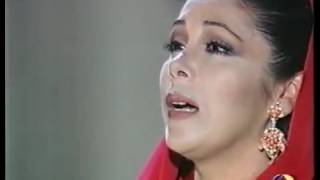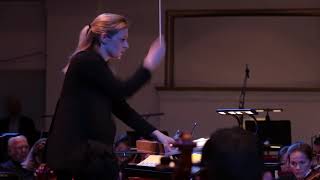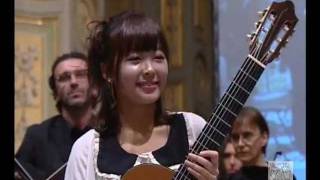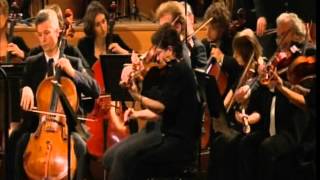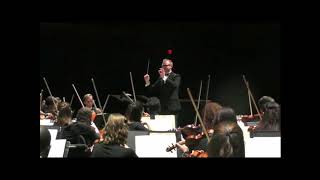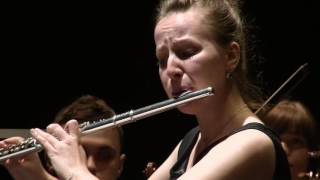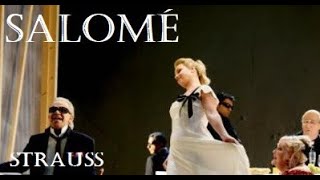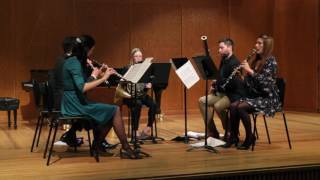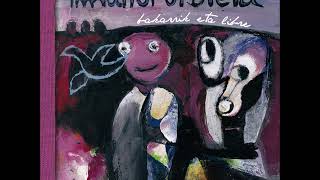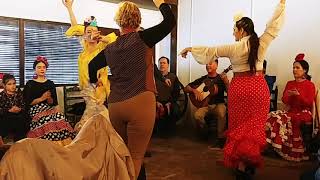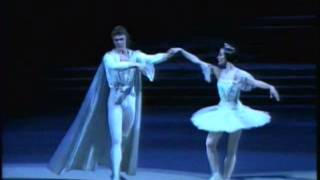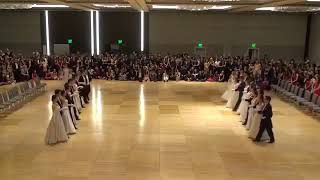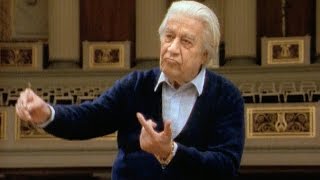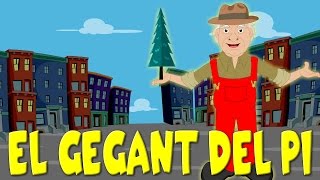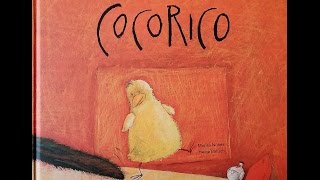The Rocío Pilgrimage begins on May 28
Recommended music videos for initiation to classical music
Manuel Pareja-Obregón (1933-1995) was a Sevillian musician and composer. Among his compositions, the sevillanas and the fandangos de Huelva stand out, having participated in the introduction of Andalusian popular music into mass culture, being an introducer of orchestral arrangements where previously only the guitar and chopsticks sounded. He was the author of some 3000 works for a large group of famous artists from the Spanish stages; in 1987 he founded the school of drummers in the village of El Rocío later known as the Drummers of Nuestra Señora del Rocío . He died in Seville at the age of 62 due to leukemia that had kept him hospitalized for the last two months of his life. He was cremated and his ashes scattered in the village of El Rocío .
The Salve Rociera is the Salve that is sung to La Virgen del Rocío , in the Sanctuary of El Rocío in Almonte (Huelva). El Rocío , as the whole of the pilgrimage is traditionally called, is a phenomenon between religious and folkloric, which moves more than a million people on the days of celebration in the month of May or June (depending on the variable festival of Pentecost ). who go to the hermitage to venerate the Virgin . It was precisely for the Pilgrimage of El Rocío , the Salve Rociera that Manuel Pareja-Obregón composed, also known as Salve a la Virgen del Rocío or Salve del olé , with lyrics by Rafael de León. Today we present it in a version of Siempre Así , a Sevillian popular music group, accompanied by the Royal Seville Symphony Orchestra , all of them under the direction of the English maestro John Richard Durant .
Wolfgang Amadeus Mozart (1756-1791) is considered one of the three giants of musical composition along with Bach and Beethoven . Child prodigy born in Salzburg (Austria), at the age of six he mastered the keyboard and the violin and began to compose. His father, Leopold exhibits him in exhausting tours of different European courts. A prolific composer (more than 600 works written from the age of five until his death), he cultivated all kinds of musical genres: piano works, chamber music, symphonies, concertante works, choral works, operas... each and every one of them, masterpieces of its gender. His operas The Magic Flute, Don Giovanni, Cosí fan Tutte, and The Marriage of Figaro are among the 10 most performed operas in the world. He died in Vienna at the age of 35.
Symphony No. 35 in D Major, K. 385, known as "Haffner" is a symphony composed by Wolfgang Amadeus Mozart in 1782 in which the evolution of the classical symphony is observed. In fact, it is the first symphony that he composed away from Salzburg , from his family, from the archbishop and from the citizens of Salzburg among whom he felt "impossible to try freely." The work consists of four movements: I. Allegro con spirito. II Andante. III Menuetto. IV Finale (Presto), of which today we will watch the fourth movement in interpretation of the San Luis Symphony conducted by the New Zealand maestro Gemma New .
Mauro Giuliani (1781-1829 was an Italian composer and guitarist, son of Michele Giuliano and Antonia Tota ; he had a brother, Nicola , an opera composer and singing teacher in Saint Petersburg . Mauro began by studying counterpoint and cello, although the six-string guitar it became his main instrument at an early age. He began composing at a very young age, highlighting the Mass that he wrote at only 16. In 1806 Giuliani settled in Vienna and soon became famous as a guitarist and composer. In April 1808 he debuted with His Concert for Guitar and Orchestra Op. 30 was a great success.From this moment on he became a benchmark for classical guitar in Vienna , teaching, giving concerts and composing more than 200 works for guitar.He died in 1829 at the age of 47.
The guitar is a plucked string instrument unlike the piano, which is a percussed string , or the violin, which is a bowed string . After centuries of evolution, the current guitar is formed by the sound box that has a wide hole or mouth at the top, the neck that is covered by the six strings that go from the bridge to the headstock whose pegs are used to tune the strings. ; on the other hand, the neck is covered by a piece of wood that is the fingerboard divided into frets that divide the strings in half tones. The origin of the guitar dates back to 1000 BC where the Assyrians already had plucked string instruments with a sound box. The six-string guitar was implanted in the 18th century by Jacob Otto with the current tuning.
Today we offer the Third movement of the Concerto for orchestra op. 30, No. 1 with Korean guitarist Kyu Hee Park as soloist.
Gabriel Fauré (1845-1924) was a French composer, educator, organist and pianist, considered one of the most outstanding French composers of his generation; his musical style influenced many composers of the 20th century . Among his best-known works are the Pavane (which today we see in a choral version), the Requiem , the nocturnes for piano and the songs Après un rêve and Clair de lune . Among his mentors was Camille Saint-Saëns , who became his friend for life. When he achieved success, he held the important positions of organist at the church of the Madeleine and director of the Paris Conservatoire . His legacy has been described as the link between the end of Romanticism with the Modernism of the second quarter of the 20th century .
The Pavane in F sharp minor , Op. 50, is a composition for orchestra and optional chorus by Fauré , written in 1887. Slowly paced, this work evokes the pavane, a 16th-century dance that was danced at the Spanish court. The piece is characterized by the elegance of the melody and harmony typical of the French composer. The piece was composed for a modest orchestral ensemble consisting of strings, flutes, oboes, clarinets, bassoons, and horns for two.
Today we offer it in a choral version with the renowned Estonian master Paavo Järvi (1962).
Recommended classical music videos
Joaquín Turina (1882-1949) was a pianist, composer and conductor born in Seville and author of the most relevant works of Spanish Impressionism along with Falla and Albéniz . Since he was a child, considered a "prodigy", he improvised virtuously on the accordion; Although he began his piano studies at the same time as high school, his parents died in 1903 and he moved to Paris where he studied composition with Vincent D'Indy , earning a living with his piano performances. In 1913, at the outbreak of the First World War, he returned to Madrid where he permanently established his residence. He was named academic number of the Royal Academy of Fine Arts of San Fernando , Seville's favorite son, in addition to receiving other important awards such as the Grand Cross of Alfonso X the Wise .
The Rocío procession , which we are presenting today, is a symphonic poem composed by Joaquín Turina in 1912 in Paris . The piece was premiered on March 30, 1913 at the Teatro Real in Madrid by Enrique Fernández Arbós , the work's dedicatee, conducting the Madrid Symphony Orchestra . There is a version for piano made by the composer between June 6 and 10, 1913. This symphonic poem is inspired by the religious tradition that takes place every year in the Aldea del Rocío (Almonte, Huelva), in which the Image of the Virgin is carried in procession through the village framed in the Rocío Pilgrimage . The author manages to convey to us the festive and devotional atmosphere of the procession, from the joy of its spontaneous dances to the religious fervor, using a large orchestral palette of bright and lavish colors.
Antonio Vivaldi (1678-1741) was an Italian priest, violinist, and composer known as the red priest (“il prete rosso”). He was born in Venice and as a child learned to play the violin from his father; at the age of 15 he entered the Seminary and once ordained a priest, he could barely attend to his religious obligations due to his health problems; so he was appointed violin teacher in an orphanage where he taught theory and instrument classes. At the age of 40, he was appointed Chapel Master in Mantua where he wrote his famous Four Seasons . From there he moved to Milan , then to Rome ; later, again to Venice and finally, to Vienna where he would die. Throughout his life he composed almost 800 works, of which half were concerts, 40 operas, 60 religious works and numerous sonatas.
The Concerto is a musical form written for one or more solo instruments accompanied by an instrumental ensemble. It was Vivaldi who established the fundamental bases of its structure with three movements ( I fast-II slow-III fast ) and presented as a dialogue between the soloists and the instrumental ensemble. Beginning with classicism (1750-1810), especially from the bases created by CPE Bach , the first movement is built following the patterns of the sonata form (exposition, development and re-exposition) , while the second and third movements adopt free and punctual forms. Frequently (this is not the case today), at the end of the first and/or third movement, the soloists have a cadence without orchestral accompaniment with which they can show off their virtuosity.
Today we offer the Concerto for flute op. 10, no. 3 in a version by the flutist Karolina Rybicka accompanied by the Music School in Inowrocław conducted by the teacher Grażyna Wolter-Kaźmierczak ; concert, as usual in Vivaldi , structured in three movements: I (0´00´´) ALLEGRO .-. II (5´25´´) CANTABILE .-. III (8´23´´) ALLEGRO.
Richard Strauss 1864-1949) was a prominent German composer and conductor who had at least a dubious, if not collaborative, relationship with the Nazi government . His long musical career spans from late romanticism to the first half of the 20th century and he is known particularly for his operas, symphonic poems , and lieder . Along with Gustav Mahler , he represents the extraordinary late flowering of Germanic Romanticism after Richard Wagner , in which an elaborate and complex development of orchestration meets an advanced harmonic style. Strauss 's music had a considerable influence on composers at the beginning of the 20th century and, especially his symphonic poems, on future film scores.
Salomé is an opera in one act with music by Richard Strauss and a German libretto by the composer himself; it was premiered on December 9, 1905 at the Königliches Opernhaus in Dresden . Strauss wrote the libretto based on the homonymous drama by Oscar Wilde , who had in turn been inspired by the Biblical passage of the martyrdom of Saint John the Baptist . The opera was made famous (at the time of its premiere, it was considered infamous) for its "dance of the seven veils," though it is now best known for the more startling final scene where Salome declares her love to the severed head of John the Baptist. . The opera was banned in different cities and times, and some of the original performers were reluctant to handle the material as written. Today, Salomé is part of the most general repertoire.
Ruth Crawford (1901-1953) was an American composer specializing in folk music . His music was a leading exponent of the emerging modernist aesthetic, and he became a central member of a group of American composers known as the " ultramoderns ". Although he composed mainly during the 1920s and 1930s, Seeger devoted himself to folk music studies from the late 1930s until his death. His music influenced later composers, particularly Elliott Carter .
The Wind Quintet is a group of five instrumentalists (mostly flute, oboe, clarinet, horn, and bassoon ). The works composed for this group are also called in this way. Unlike the string quartet , whose sound color is very homogeneous, the instruments of the wind quintet differ considerably in timbre and technique. The modern quintet arises from the group sponsored by Joseph II of Habsburg in the 18th century in Vienna : 2 oboes, 2 clarinets, 2 horns and 2 bassoons. The quintets composed by Anton Reicha and Franz Danzi definitively established the genre: flute, oboe, clarinet, horn and bassoon . Although they declined during the second half of the 19th century , they regained strength starting in the 20th century .
Recommended music videos for all tastes
Ecos del Rocío arose at the beginning of the 80s from a group of friends who were united by friendship since childhood and later by a love for the world of Sevillanas . They begin singing at the festivals in their hometown Rota (Cádiz) with no other pretension than to enjoy singing and dancing with their girlfriends, now their wives. Today his musical career is endorsed by 36 records on the market, 14 gold records, 2 platinum records and 1 diamond record with more than two million records sold. Always friends of their friends, they prefer to live in their native Rota , the one with the smell of seaweed and hot bread, the one that always supported them, the one that awarded them the GOLDEN PUMPKIN AND URTA, made them a CULTURAL ROTEÑISTA, gave them an AVENUE to name of ECOS DEL ROCIO and gave them the GOLD MEDAL OF THE CITY. ( Extracted from his own website )
Mary Lou Williams (1910-1981) was an American jazz pianist and composer. At sixteen, she married saxophonist John Williams , from whom she adopts her last name; both become part of Andy Kirk 's Big Band ; later he will join the group Twelve Clouds of Joy , as arranger and pianist; in 1942 she formed her own group with her second husband, the trumpeter Harold Baker . Meanwhile, he arranges for musicians in the category of Louis Armstrong , Benny Goodman or Duke Ellington and later works with Dizzy Gillespie , Thelonious Monk and Bud Powell among other renowned musicians. She was a brilliant pianist, growing out of the stride style and constantly evolving through the conceptual changes taking place in jazz .
Imanol Urbieta (1934-2016) was a Basque musician and writer born in Zarautz , Gipuzkoa; Graduated in Theology, he studied music in Vitoria-Gasteiz, Donostia, Bordeaux, Budapest and Strasbourg . He had a connection with music since he was a child; At the age of 12 he gave piano concerts at the Arrillaga confectionery in Zarauz and began playing the clarinet in the Zarauz Municipal Band until he moved to Arantzazu at the age of 14. After leaving Arantzazu , he immersed himself in the world of culture, creating the Irrintzi cultural group, with Otxote Oleskariak and the Naya orchestra in contact with the Ez Dok Amairu movement.
In 1967 he recorded his first record, Haur kantariak , the first record made in Basque with songs for children. In 1979 he founded Xirula Mirula , the first music school in Gipuzkoa , where he produced abundant learning material including the books Xixupika, Txalopin txalo and Lau katu eta tambor bat . He collaborated with the Department of Culture of the Basque Government in the creation of the music curriculum . In 2010 he was awarded the Argizaiola Prize "for his contribution to the Basque children's songbook". Among the groups that adapted some of his works are Oskorri, Pirritx eta Porrotx or Amaia Zubiria .
Today we offer the following Urbieta songs with their respective interpreters: 1 (0´00´´) Bakarrik eta libre - Eñaut Elorrieta .-. 2 (4´11´´) Uztaiak gora (Ran Roberran) – Petti .-. 3 (6´44´´) Astoa ikusi nuen – Joseba Irazoki .-. 4 (9´59´´) Behind betiko – Pariak bai .-. 5 (14´02´´) Guitar bat – Anari eta ningininginiak .-. 6 (18´42´´) Kalera, kalera – Fermin Muguruza .-. 7 (21´49´´) Mac Mikel – Mursego .-. 8 (26´ 00´´) Kalaberak – Matxura .-. 9 (29´43´´) Txoria nintzela – Lou topet .-. 10 (32´57´´) 18 Serore – Audience .-. 11 (36´00´´) Jon Braun – Makala Jazz funk band.
Natasa Theodoridou (Greek: Νατάσα Θεοδωρίδου), born October 24, 1970 in Thessaloniki , is a Greek singer. He studied journalism and at the same time attended guitar and harmony classes. During her studies, she began her singing career in Thessaloniki . She is the only female Greek artist to have her first three albums reach platinum status. She has been certified for a total of at least 432 thousand albums and 20 thousand singles sold by IFPI Greece . On March 14, 2010, Alpha TV ranked Theodoridou as the 12th best-selling female singer in the country's phonographic era (since 1960), with a total of ten platinum and three gold records.
Recommended peculiar videos
The sevillanas , formerly called seguidillas sevillanas , are a typical Andalusian music and dance, especially in Seville, Huelva and Cádiz , danced in couples and with a festive nature. The music has its origin in the La Mancha seguidilla, from which it inherits its structure but, due to contact with other Andalusian music, its sound has become more flamenco. As for the dance, which would be added later, it takes its movements from the bolero school . They are not a flamenco style, properly speaking, because their dance is choreographed and their lyrics have been simplified to accompany the dance, although they do bring together various aesthetic elements of flamenco. The sevillanas are always performed in series of four and are made up of a simple seguidilla of four verses and a chorus of three.
Today they are offered to us by Pepi Vidueira and Juan Reyes , with Grupo Algarabía from El Rocío .
Aleksandr Glazunov (1865-1936) was an influential Russian composer, conductor, and music teacher. He alternated the recovery of Russian musical roots with his adherence to Western stylistic influences, which became stronger in his latest works. He was close to the circle of Russian nationalist and folklore revival composers known as the Group of Five . He is considered the last exponent of the Russian national school of composition, founded by Mikhail Glinka .
Raymonda is a ballet in three acts, with music by Aleksandr Glazunov and choreography by Marius Petipa , premiered at the Mariinsky Theater in Saint Petersburg , Russia, on January 19, 1898. The work chronicles the vicissitudes of a crusader prince and an abominable Saracen in his fight for the love of Raymonda .
Today we offer it from the Bolshoi Theater in Moscow with its own Dance Corps and Orchestra .
Ion Ivanovici (1845 - 1902) was a Romanian composer and conductor, author of music for Brass Band and light music. His interest in music began when he learned to play the flute as a child in a self-taught way. He registered with the 6th Galati Infantry Regiment where he learned to play the clarinet under the guidance of Alois Riedl . His talent for music led him to be one of the best musicians in the regiment, and he continued his studies in Iasi under the direction of Emil Lehr . He became an orchestra conductor and traveled around Romania offering numerous concerts. He lived in Galati for almost all his life, but in 1901 he settled in Bucharest , where he died a year later. Throughout his life he composed more than 350 songs, including various waltzes, quadrillas, polkas and marches.
The Viennese waltz (in German, Wiener Walzer ) is one of the dance styles within ballroom dancing ; It is a rotating dance where the dancers are constantly turning to the leader's right (natural) or to the left (reverse), interspersed with non-rotating change steps to change the direction of rotation. A true Viennese waltz consists only of turns and change steps. Furthermore, in a properly danced Viennese waltz , the couples do not pass, but instead continually turn from left to right as they travel counterclockwise around the floor, following one another.
Anthony Bruckner (1824-1896) was an Austrian organist and composer obsessed with perfection to the point that his works were continually revised and reformed, so that today there are numerous versions of his works. After his father's death, he entered the nearby St. Florian Monastery as a chorister, where he received music lessons. In 1855 he was appointed organist of the Ignatiuskirche Cathedral , without this being an obstacle for him to continue his composition studies in different ways. In 1864 he began to publish his first compositions that would henceforth focus mainly on religious works and symphonic works.
Today we attended with the Romanian "teacher of teachers", Sergiu Celibidache , part of a rehearsal of Bruckner 's Seventh with the Berlin Philharmonic .
Recommended music videos for children
Various Wikipedia articles have been used to write these texts.
The texts of Videomusicalis are written in Basque, Spanish and English.





